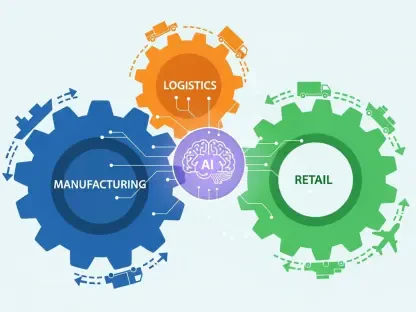Setting the Stage for Digital Safety Innovations
In an era where social media platforms like TikTok and Douyin engage over 1.6 billion users globally, the mental health implications of short-form video content have become a pressing concern, especially among vulnerable youth. A staggering volume of emotionally charged videos—ranging from personal confessions to viral challenges—can inadvertently trigger distress or even suicidal ideation, sparking urgent calls for technological solutions to safeguard digital spaces and positioning AI-driven mental health prediction as a critical frontier in platform safety.
The rise of short-form content has amplified both connectivity and risk, with experts noting that certain videos may normalize harmful behaviors. As regulatory scrutiny intensifies and public demand for safer online environments grows, the development of advanced tools to detect and mitigate these risks is no longer optional but essential. This review delves into a pioneering AI technology designed to predict mental health risks in short-form videos, exploring its capabilities and real-world impact.
Core Features of the AI Prediction Model
Knowledge-Guided Neural Topic Modeling
At the heart of this technology lies an innovative approach that blends medical expertise on suicide risk factors with cutting-edge machine learning. Unlike traditional content moderation tools, this model analyzes short-form videos by identifying thematic patterns linked to emotional distress, such as narratives or visuals that might provoke harmful responses. Its ability to prioritize high-risk content for review marks a significant leap forward in addressing the unique challenges posed by social media.
This integration of domain-specific knowledge allows the AI to go beyond surface-level analysis, focusing on subtle cues often missed by generic systems. By aligning with established psychological risk indicators, the model offers a nuanced understanding of content impact, ensuring that platform moderators can act swiftly on the most concerning material. Such precision is vital in environments where content spreads rapidly and consequences can be severe.
Viewer Interaction Analysis
Another standout feature is the model’s emphasis on viewer comments as real-time indicators of emotional distress. By examining user feedback, the technology captures the psychological ripple effects of a video, distinguishing between the creator’s intent and the audience’s reaction. This dual perspective enhances prediction accuracy, providing a fuller picture of content influence.
The anonymity of online spaces often emboldens users to express raw emotions in comments, offering a direct window into potential harm. Leveraging this data, the AI refines its assessments, ensuring that videos eliciting expressions of suicidal thoughts are flagged with greater reliability. This focus on interaction dynamics sets the technology apart from conventional tools that overlook audience responses.
Performance Metrics and Comparative Edge
The performance of this AI model stands out when measured against existing content moderation systems. By incorporating medical insights and social media-specific trends, it achieves superior accuracy in identifying videos likely to trigger harmful emotional outcomes. Testing on major platforms has demonstrated its capacity to outperform other state-of-the-art tools, particularly in detecting nuanced risks.
Beyond accuracy, the model enhances efficiency by streamlining the moderation process. It prioritizes content for human review, reducing the burden on moderators while maintaining a high detection rate for high-risk videos. This balance of automation and human oversight addresses a critical need in scaling safety measures for platforms with massive user bases.
A key strength lies in its adaptability to evolving content trends, such as viral challenges or emotionally intense narratives. Continuous updates with new data ensure that the system remains relevant amid shifting user behaviors, providing a robust framework for long-term platform safety. This adaptability underscores its potential as a cornerstone technology in digital health initiatives.
Real-World Deployment and Impact
On platforms serving billions, such as TikTok and Douyin, this AI technology has been deployed to flag high-risk short-form videos for immediate review. Its implementation supports broader safety initiatives by identifying content that could harm vulnerable users before it gains traction. Case studies from these platforms highlight successful interventions that have mitigated potential tragedies.
The practical application extends beyond mere detection, aiding in compliance with increasing regulatory demands. As governments and advocacy groups push for stricter content oversight, the technology provides a proactive solution, helping platforms navigate legal and ethical challenges. Its role in fostering trust among users and stakeholders cannot be overstated.
Moreover, the system’s integration into existing moderation workflows demonstrates its scalability. By complementing human decision-making rather than replacing it, the AI ensures that final actions align with platform policies and cultural contexts. This collaborative approach is proving instrumental in creating safer digital ecosystems amid growing public scrutiny.
Challenges in Implementation
Despite its promise, the technology faces significant hurdles in interpreting the nuanced nature of online content. Emotional tone, cultural references, and sarcasm often complicate automated analysis, leading to occasional misclassifications. Ongoing refinements are necessary to enhance the model’s contextual understanding and reduce false positives or negatives.
Ethical concerns also loom large, particularly around user privacy and the potential for algorithmic bias. Ensuring that data handling complies with global standards while avoiding disproportionate targeting of certain demographics remains a critical challenge. Transparent methodologies and regular audits are essential to maintain fairness and trust.
Regulatory landscapes add another layer of complexity, as differing laws across regions impact deployment. Striking a balance between innovation and adherence to legal frameworks requires continuous dialogue with policymakers. These obstacles highlight the need for a cautious, iterative approach to scaling the technology across diverse markets.
Looking Back and Moving Forward
Reflecting on the journey of this AI-driven mental health prediction tool, its development marked a pivotal moment in addressing the intersection of technology and digital well-being. The model’s ability to blend medical knowledge with data-driven insights set a new standard for content moderation, while its real-world applications on major platforms showcased tangible benefits in safeguarding users.
Looking ahead, the focus shifts toward enhancing model precision through advanced natural language processing and broader data sets. Collaborative efforts between tech companies, mental health experts, and regulators emerge as a vital next step to tackle ethical and legal challenges. These partnerships aim to refine the technology’s fairness and effectiveness across varied cultural contexts.
Ultimately, the path forward involves expanding integration into emerging platforms and exploring preventive features, such as user alerts or resource links for at-risk individuals. By investing in these actionable strategies, the industry takes significant strides toward creating a safer online world, ensuring that innovation continues to align with the urgent need for mental health advocacy.









